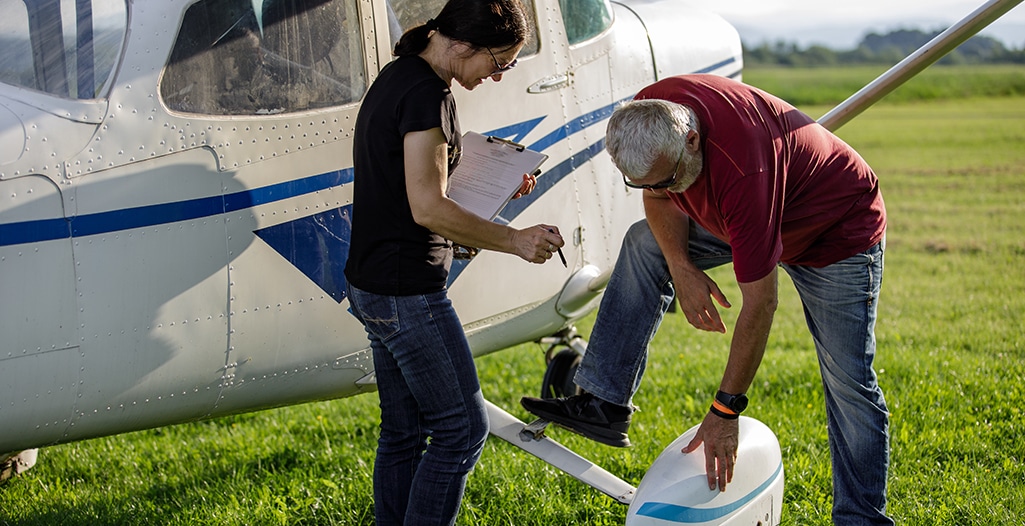Crucial Pre-Flight Checklist Item: Understand the Insurance Claim Process
As warmer weather arrives and we enter what is traditionally the busier flying season, it is helpful to consider what to do and what to have available in the unfortunate event of a claim. Knowing what to anticipate is beneficial to the efficient, expeditious and collaborative processing and resolution of your claim.

How To Streamline the Claim Process Following an Aviation Incident
Procedurally and documentation-wise, we offer the following tips for navigating aviation insurance claims:
- Promptly contact your aviation insurance broker’s office or your aviation insurance provider directly to report the claim. Your aviation insurance broker is familiar with general claims procedures and the information needed to pass on to your insurance provider. If your broker’s office is closed during evening, weekend or holiday hours, some insurance providers, like Global Aerospace, have an after-hours answering service that can immediately dispatch messages of an urgent nature to claims handlers.
- As able, document the loss with photos, diagrams and statements.
- Unless the incident requires immediate removal of the aircraft from the site, await agreement and authorization from the FAA, the NTSB or your aviation insurance claim handler before commencing recovery and transportation of the aircraft. These entities are familiar with aircraft-specific recovery, transportation and storage service providers that can be engaged. If immediate action is required to move the aircraft, request a written quotation from the entity performing the recovery, consider its reasonableness and document the recovery process and any additional damage that may be caused during it.
Have copies of the following pilot documents available:
- Pilot license
- Most recently obtained flight review endorsement or other, recurrent training certificate(s)
- Most recently issued medical certificate or BasicMed course completion certificate
- Pilot logbook excerpts showing checkout in make and model and/or make and model or other flight time specified by your aviation insurance policy
Have copies of the following aircraft documents available:
- Airworthiness certificate
- Registration certificate
- Avionics and equipment list, and/or a photo of the aircraft’s instrument panel
- Last annual inspection of the airframe
- Last annual inspection of the engine
- Last annual inspection of the propeller
- Last replacement or overhaul of the magnetos
- Last replacement or overhaul of the propeller governor (if applicable)
In lieu of the actual maintenance logbook excerpts, knowing the make and model, serial number, approximate total time in service and approximate time since last overhaul of the engine, propeller, magnetos and propeller governor (if applicable) is beneficial.
- For a theft or vandalism claim, file a police report with local law enforcement.
- For a storm damage claim, collect weather data or reports to document the weather event.
- If another party is involved, obtain copies of any applicable contact information. These can include things such as hangar leases and aircraft rental agreements.
Next Steps
As for how to proceed, consider the following suggestions:
- Arrange to protect the aircraft from further damage. For example, see if a hangar or other storage facility is available. Secure the aircraft on tie-downs. Remove handheld avionics and other personal effects. With the consent of the investigating agency(ies) and the insurance provider’s representative, arrange for removal of valuable avionics.
- Ideally, the Named Insured(s) listed on the aviation insurance policy should be the same person(s) or entity(ies) listed as the registered owner(s) of the aircraft. Make certain that is the case in order to avoid potential additional steps in the insurance claim process.
- Research and familiarize yourself with airframe, engine and propeller shops in the geographical regions where the aircraft is operated. Confer with others regarding their experiences. It is preferred that the aircraft owner seek out and provide a comprehensive, itemized repair work scope proposal and cost estimate from the vendor(s) of their choice.
- Note that most aviation insurance policies do not provide for first party loss of use or first party diminution in value.
- Consider the insured value of the aircraft. Under the Global Aerospace policy form for Aeroinsure aircraft, the aircraft is a “total loss” if the cost to repair equals or exceeds 70% of the aircraft’s insured value.
- Note that the aviation insurance policy does not apply to physical damage caused by and confined to wear and tear, deterioration or mechanical or electrical breakdown, failure or malfunction.
- Be aware that the policy provides for the actual cost to repair the damaged property with materials and parts of like kind and quality. There are numerous life-limited components that may be freshly overhauled to “zero time” or replaced with new as part of the repair. Depending on the amount of time already used up on the incident components, a proration or “betterment” adjustment may be applicable. That is where you and the insurance provider share in the cost of the overhaul or replacement.
- If the aircraft is a “total loss,” consider whether you would have any interest in retaining it as salvage. Note that salvage is sold as the aircraft in its entirety, typically as-is, where-is.
Taking the Stress Out of Aviation Insurance Claims
While every claim scenario is unique, navigating an aviation insurance claim need not be intimidating. Many aviation insurance claims handlers are aircraft owners and pilots themselves, thereby anticipating and empathizing with your questions, concerns and needs. They are eager to find an efficient and equitable resolution for all parties involved to get you airborne and back to enjoying the industry we all support.




